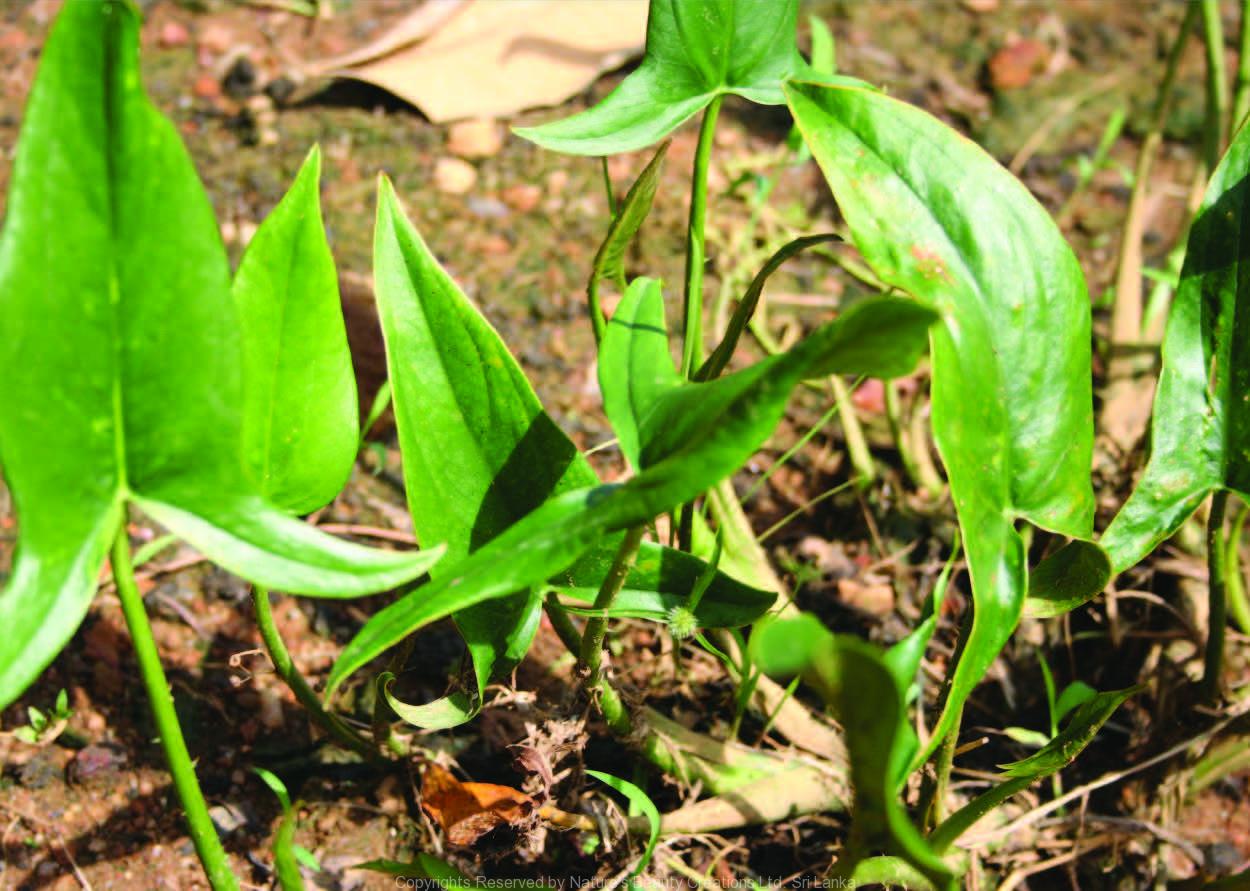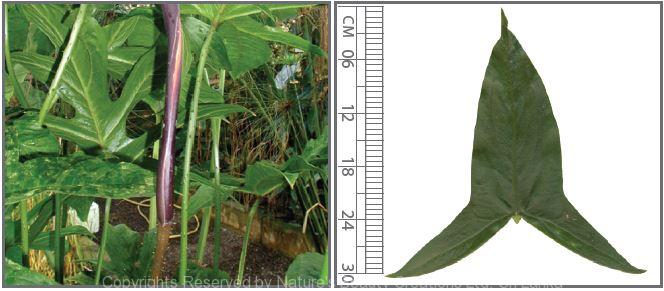

Traditional Knowledge
Useful plant parts :
Leaf and stem
Uses in traditional medicine :
- Cooked stem and young leaves are common remedies for piles
Scientific Research
Chemical constituents:
β-sitosterol acetate, stigmasterol and its acetate from rhizome
Bioactivity :
Methanol extract of leaves: effective against Trichinella spiralis infections, anticestodal; aqueous alcohol extract of roots: antinociceptive, anti-inflammatory, antidiarrhoeal; petroleum ether, ethyl acetate and methanol extracts of rhizome: antimicrobial, cytotoxic
Clinical:
Note :
Young leaves and fresh stem are used as vegetables
References : Temjenmongla and Yadav, A. K., (2006), Anticestodal Efficacy of Lasia spinosa Extract against Experimental Hymenolepis diminuta Infections in Rats, Pharmaceutical Biology, 44(7), 499-502. Temjenmongla and Yadav, A. K., (2011), Efficacy of Lasia spinosa leaf extract in treating mice infected with Trichinella spiralis, Parasitology Research, 110(1), 493-8. Debashish, D. E. B. et al., (2010), Antinociceptive, anti-inflammatory and anti-diarrheal activities of the hydroalcoholic extract of Lasia spinosa Linn. (Araceae) roots[J], Latin American Journal of Pharmacy, 29(8), 1269-1276. Dinda, B. et al., (2004), Chemical constituents of Lasia spinosa, Mussaenda incana and Wendlandia tinctoria, Journal of the Indian Chemical Society, 81(1), 73-76. Fakrul, A. L. A. M. et al., (2011), Antimicrobial and Cytotoxic Activity, from Lasia spinosa and Isolated Lignan, Latin American Journal of Pharmacy, 30(3), 550-3.
Copyrights Reserved By
Natures Beauty Creations



